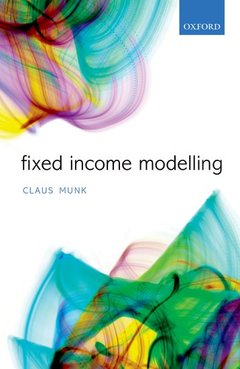Description
Fixed Income Modelling
Author: Munk Claus
Language: English
Subjects for Fixed Income Modelling:
Fixed Income Modelling
Publication date: 02-2015
576 p. · 18.2x23.4 cm · Paperback
Publication date: 02-2015
576 p. · 18.2x23.4 cm · Paperback
Fixed income modelling (hardback)
Publication date: 06-2011
574 p. · 16.2x23.5 cm · Hardback
Publication date: 06-2011
574 p. · 16.2x23.5 cm · Hardback
Description
/li>Biography
/li>
Fixed Income Modelling offers a unified presentation of dynamic term structure models and their applications to the pricing and risk management of fixed income securities. It explains the basic fixed income securities and their properties and uses as well as the relations between those securities. The book presents and compares the classical affine models, Heath-Jarrow-Morton models, and LIBOR market models, and demonstrates how to apply those models for the pricing of various widely traded fixed income securities. It offers a balanced presentation with both formal mathematical modelling and economic intuition and understanding. The book has a number of distinctive features including a thorough and accessible introduction to stochastic processes and the stochastic calculus needed for the modern financial modelling approach used in the book, as well as a separate chapter that explains how the term structure of interest rates relates to macro-economic variables and to what extent the concrete interest rate models are founded in general economic theory. The book focuses on the most widely used models and the main fixed income securities, instead of trying to cover all the many specialized models and the countless exotic real-life products. The in-depth explanation of the main pricing principles, techniques, and models as well as their application to the most important types of securities will enable the reader to understand and apply other models and price other securities. The book includes chapters on interest rate risk management, credit risk, mortgage-backed securities, and relevant numerical techniques. Each chapter concludes with a number of exercises of varying complexity. Suitable for MSc students specializing in finance and economics, quantitatively oriented MBA students, and first- or second-year PhD students, this book will also be a useful reference for researchers and finance professionals and can be used in specialized courses on fixed income or broader courses on derivatives.
Claus Munk holds a PhD in Economics (1997) and an MSc in Mathematics-Economics (1993) from the University of Southern Denmark, where he also served as Assistant, Associate, and full Professor in the period 1996-2008. His primary research areas are financial derivatives, asset allocation, general asset pricing theory, and the application of numerical methods in finance. His research has been published in journals such as Journal of Financial Economics, Review of Derivatives Research, Journal of Banking and Finance, European Finance Review, and Journal of Economic Dynamics and Control.
© 2024 LAVOISIER S.A.S.




